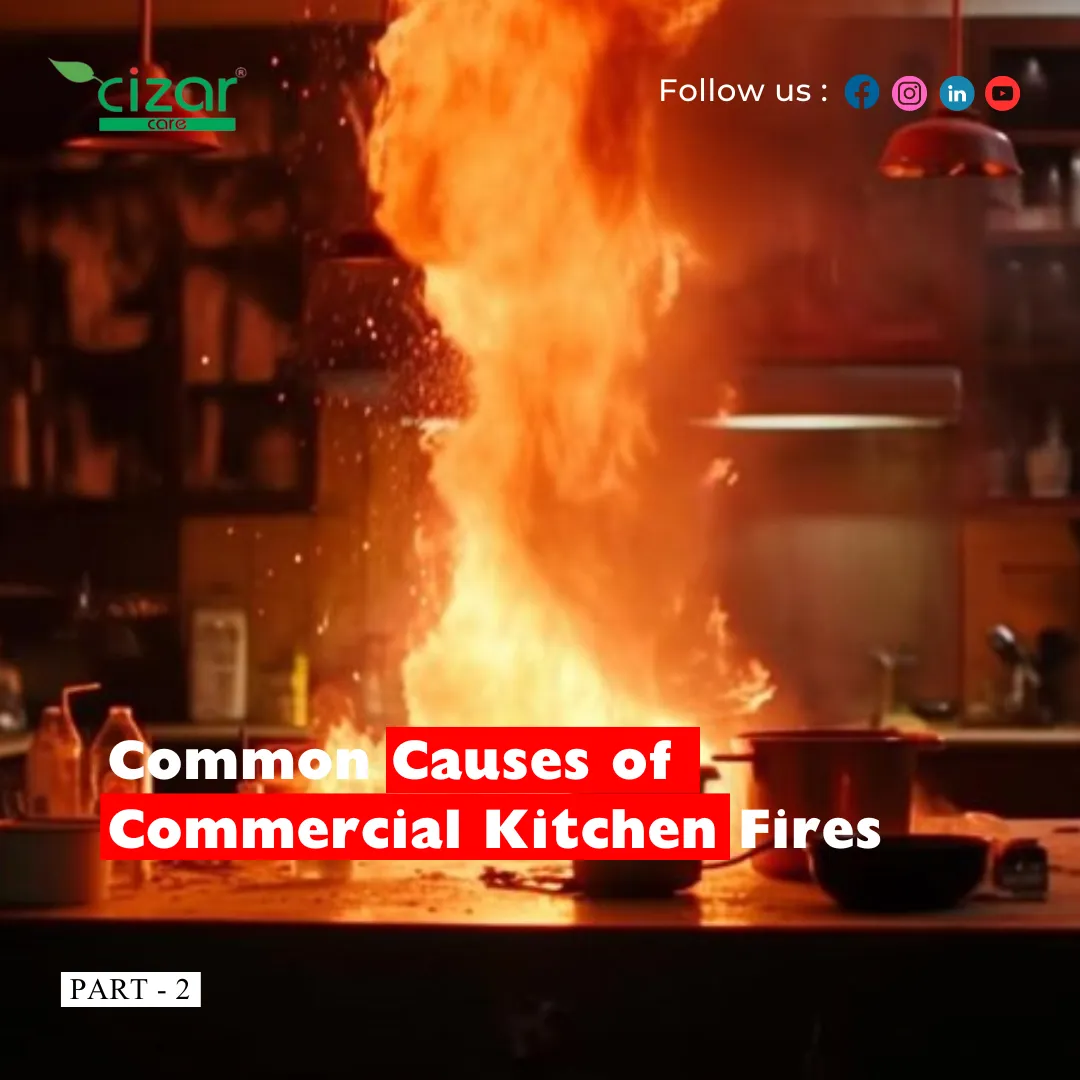A Closer Look at Common Causes and Prevention Strategies for Commercial Kitchen Fires
A Closer Look at Common Causes and Prevention Strategies for Commercial Kitchen Fires
In the previous part, we witnessed the devastating consequences of ignoring a commercial kitchen duct cleaning system. Now, let’s delve deeper into the causes of industrial/commercial kitchen fires, a significant threat to businesses across India.
The Culprits Behind the Kitchen Fire
- Grease Buildup: As we saw in Chef Vikram’s story, grease buildup in the ventilation system is the main cause of kitchen fires. When heated, grease can ignite, causing the fire to spread rapidly.
- Hot Surfaces: Cooking equipment, such as grills, stoves, and fryers, can pose a fire hazard if not properly maintained or operated.
- Electrical Faults: Faulty electrical wiring or appliances can start a fire, especially in high heat and humidity environments.
- Improper Storage: Storing flammable materials like cleaning supplies or paper products near cooking areas can increase the risk of fire.
- Human Error: Careless actions, such as leaving food on the stove unattended or throwing hot grease into the trash, can cause accidental fires.
A Checklist for Kitchen Safety
To safeguard your commercial kitchen from fire hazards, it’s essential to implement the following preventive measures:
(1) – Regular Cleaning and Maintenance:
- Perform a thorough cleaning of kitchen equipment, including ventilation systems, exhaust hoods, and filters.
- Inspect electrical wiring and equipment for wear and tear or damage.
- Ensure proper maintenance of fire sprinkler systems.

(2) – Fire Safety Training:
- Provide regular fire safety training to all kitchen staff, covering topics like evacuation procedures, fire extinguisher use, and prevention of common fire hazards.
(3) – Proper Ventilation:
- Make sure your kitchen has a well-maintained ventilation system that effectively removes grease, smoke, and heat.
- Regularly clean and inspect the ventilation system to prevent grease buildup.
(4) – Safe Storage Practices:
- Keep flammable materials away from cooking areas and heat sources.
- Dispose of grease properly in designated containers.
(5) – Emergency Procedures:
- Develop and practice emergency evacuation plans for your kitchen staff.
- Make sure all employees know the location of fire extinguishers and how to use them.
By following these guidelines and prioritizing fire safety, you can significantly reduce the risk of a kitchen fire and protect your business, employees, and customers.

